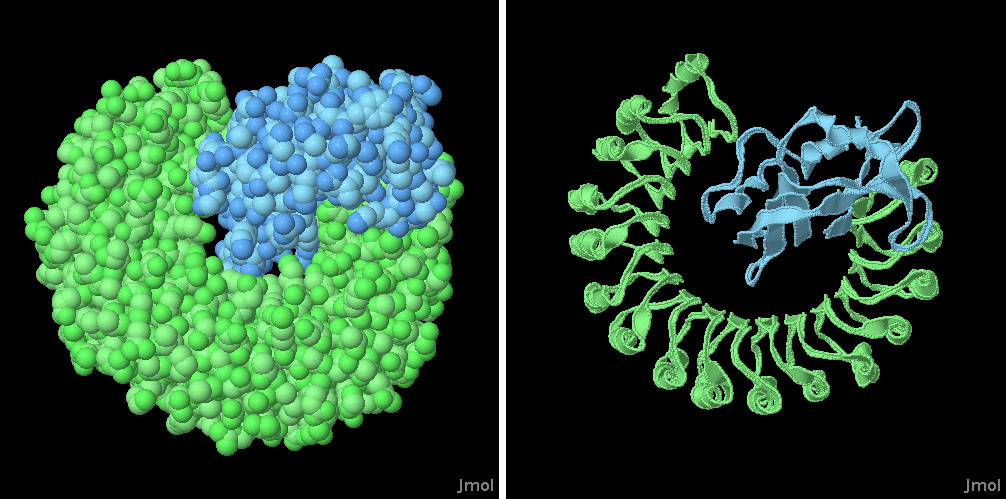|
Inhaltsübersicht | Nanomaschinen | Moleküle | Programme | Kurse | Fun | Links |
||
| > |
Ribonuclease A

Exploring the Structure
Ribonuclease is a dangerous molecular machine that indiscriminately chops up any RNA that it finds. It is toxic to cells, and was once tested as a possible therapy for killing cancer cells. Unfortunately, it is also toxic to normal cells, so it isn't much use as a treatment. Cells protect themselves from ribonuclease with powerful inhibitors such as the ribonuclease inhibitor shown here in green from PDB entry 1dfj. These inhibitors are found inside cells and they quickly bind to any ribonuclease that finds its way inside. The binding is amazingly tight due to the extensive contacts formed as the inhibitor wraps around the ribonuclease.
This illustration was created with Jmol--you can see an interactive version of the structure by clicking on the image. To see the papers used to write this Molecule of the Month, click here.
For an up-to-date list of ribonuclease A related entries you can perform a Blast sequence search (5RSA:A) by clicking here. Tabular reports are subsequently available from the left hand menu under "Tabulate".
Topics for further exploration
- PDB entry 5rsa is a structure solved in part by neutron diffraction, which is able to observe the positions of hydrogen atoms. The experiment was performed on crystals that were soaked in deuterated water (heavy water). In the file, you will see that all the water positions are DOD (one oxygen atom and two deuterium atoms), and that many of the hydrogen atoms in the protein have also exchanged hydrogen atoms with the heavy water, and are now deuterium. Can you make sense of why certain positions in the protein are deuterium and why others keep their original hydrogen atoms?
- Many structures of ribonuclease are available with different inhibitors bound in the active site. Can you find examples where the inhibitors are similar to the RNA substrate that is normally cleaved by the enzyme?
- The four disulfide linkages in ribonuclease glue the protein into its active form. How many of these linkages connect distant portions of the chain, and how many stabilize only a small loop?
Next: Jmol Animation
Previous: Precision Cutting
Last changed by: A.Honegger,